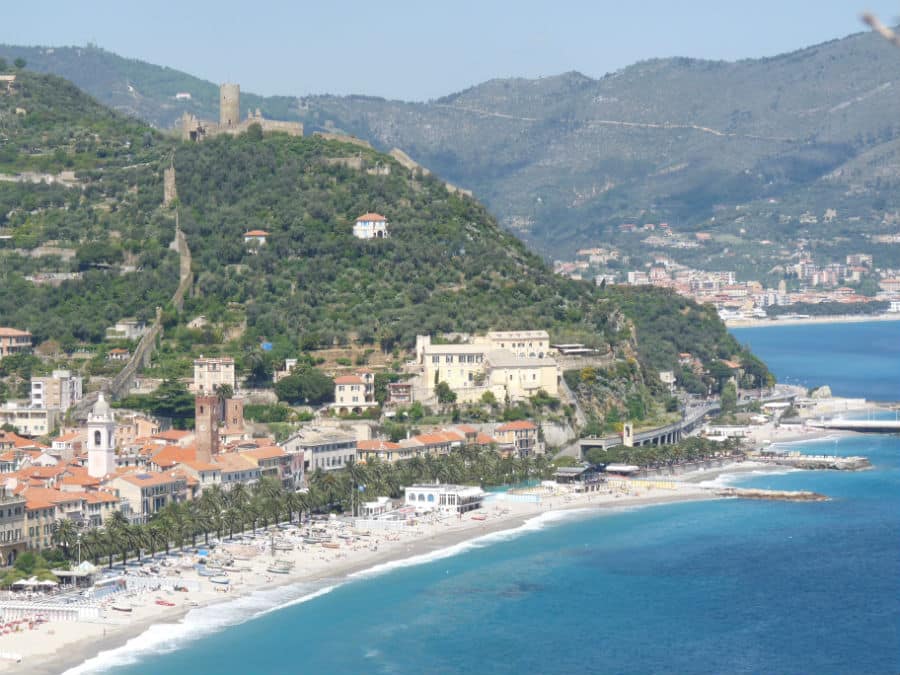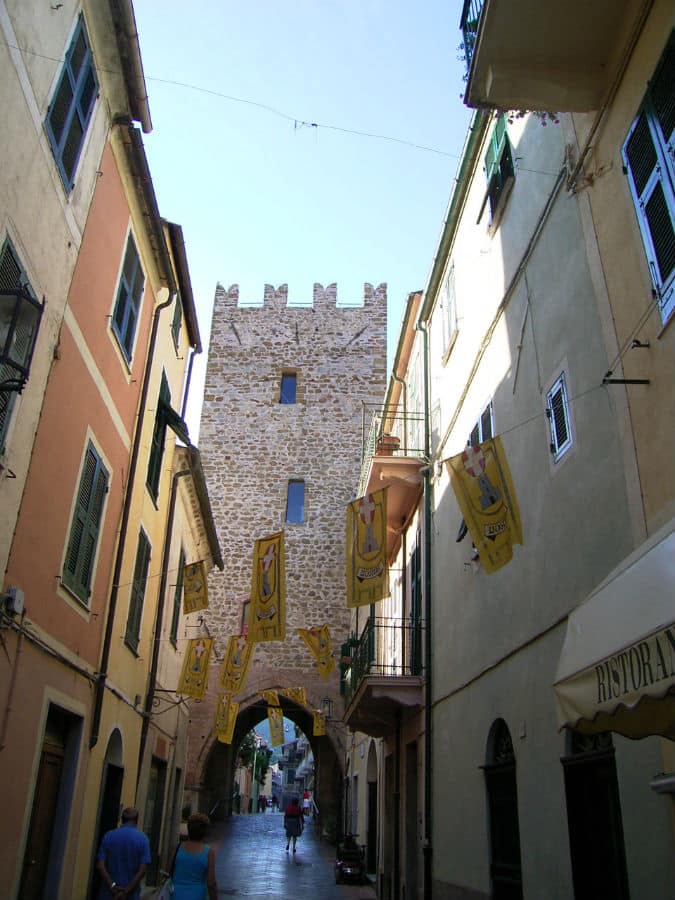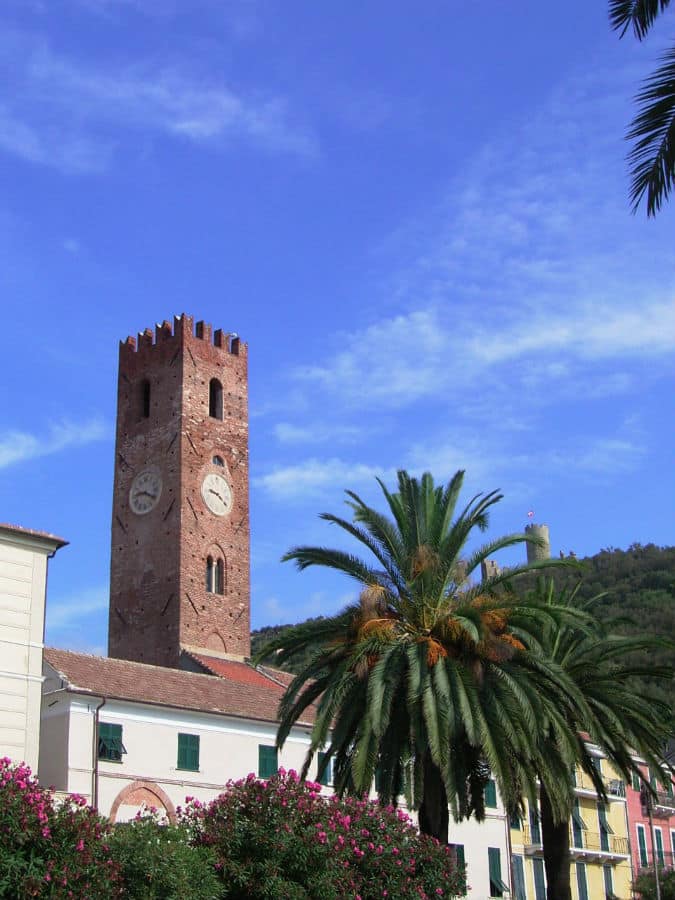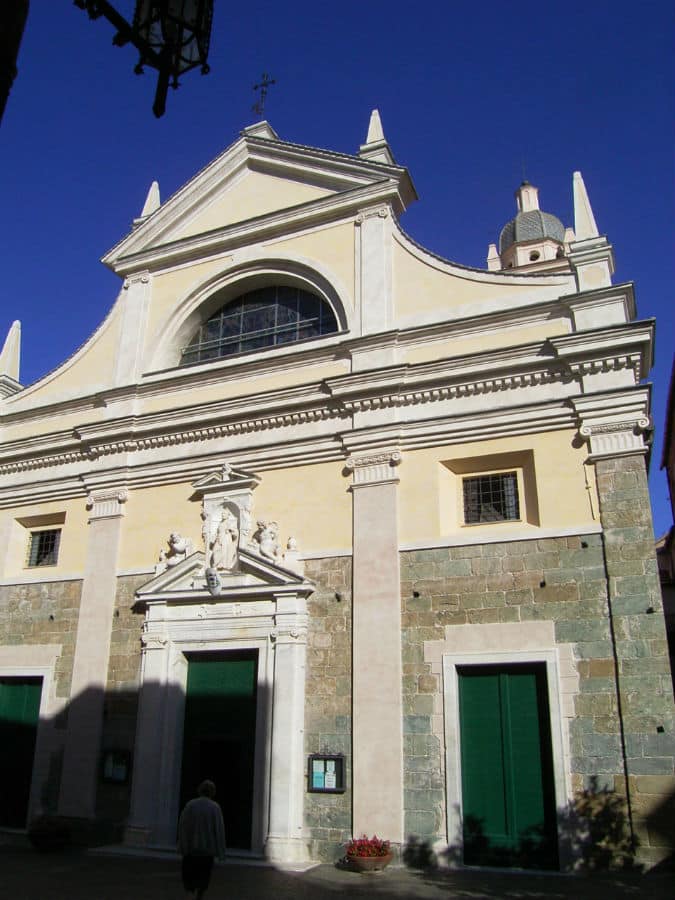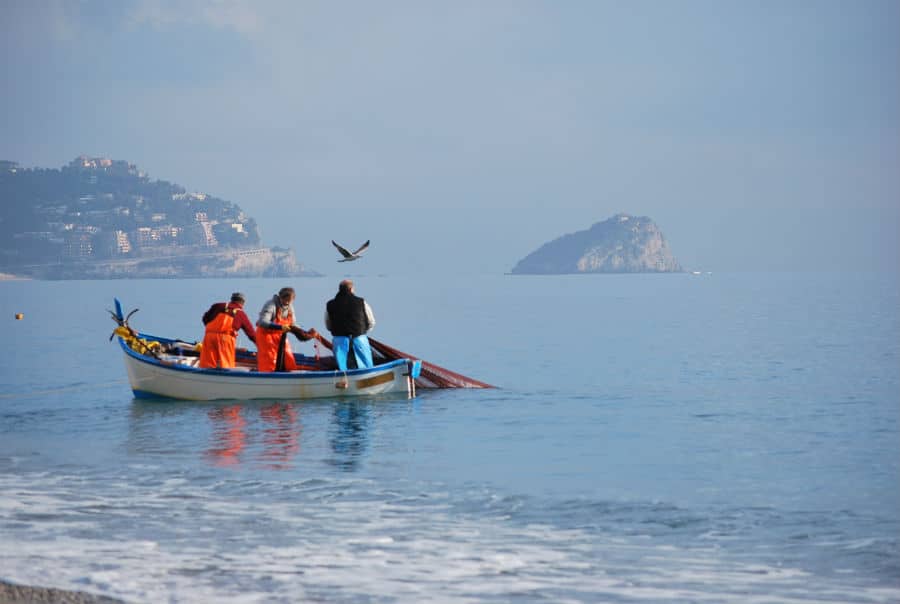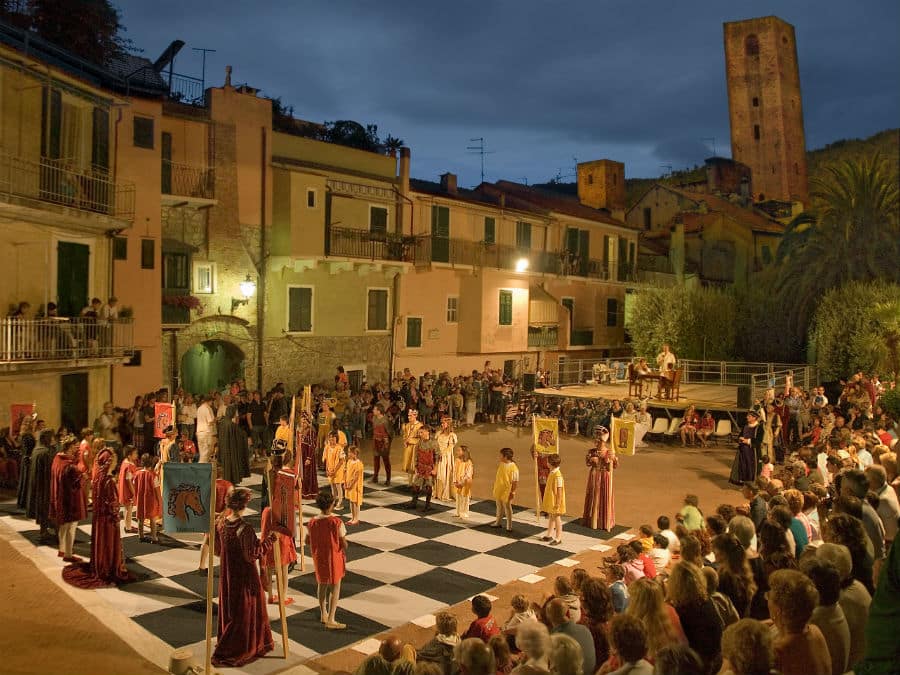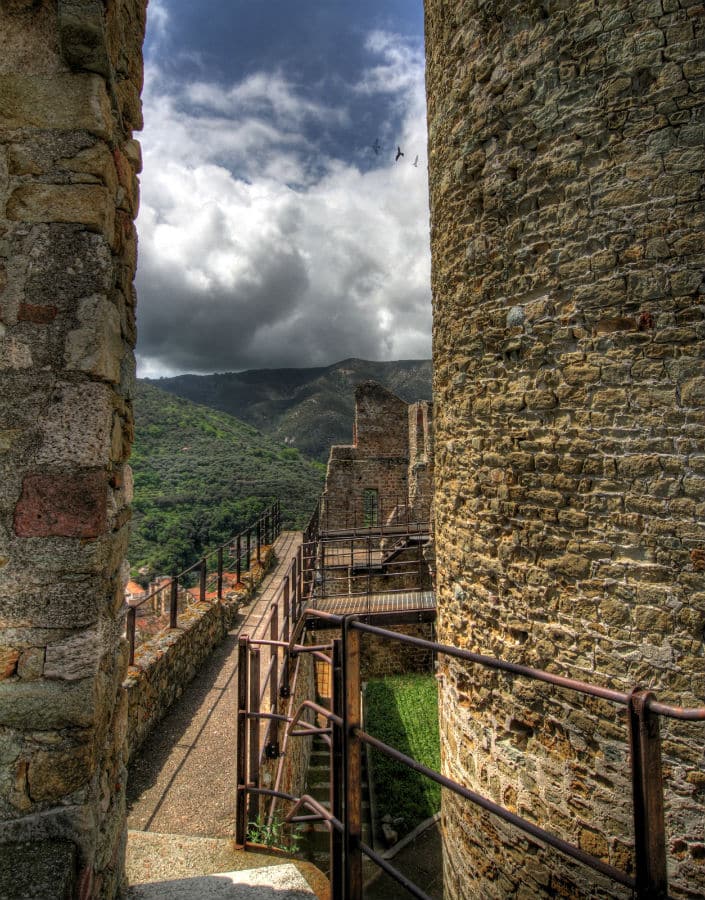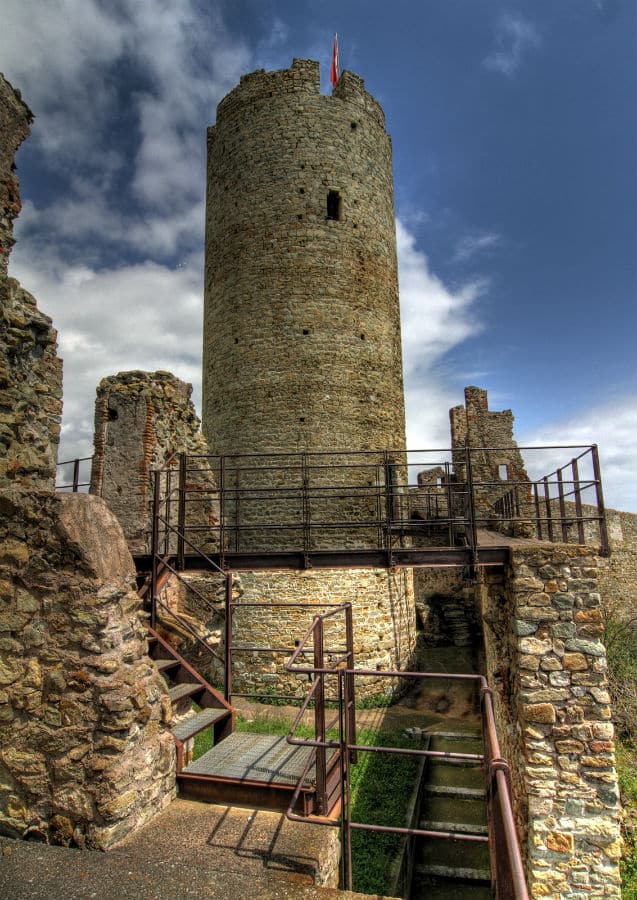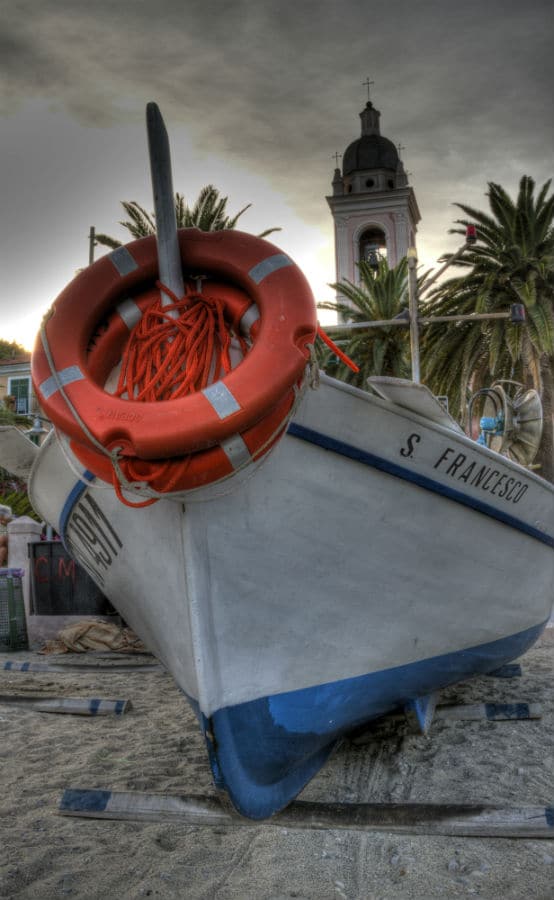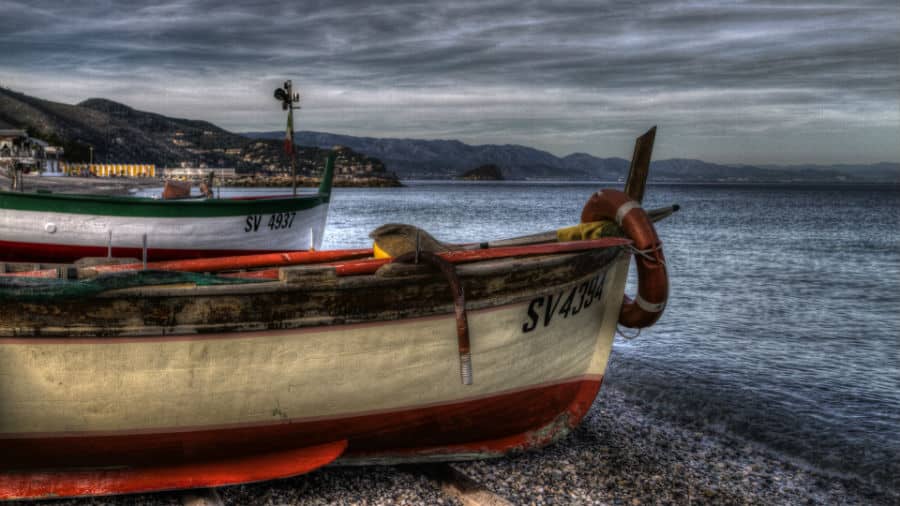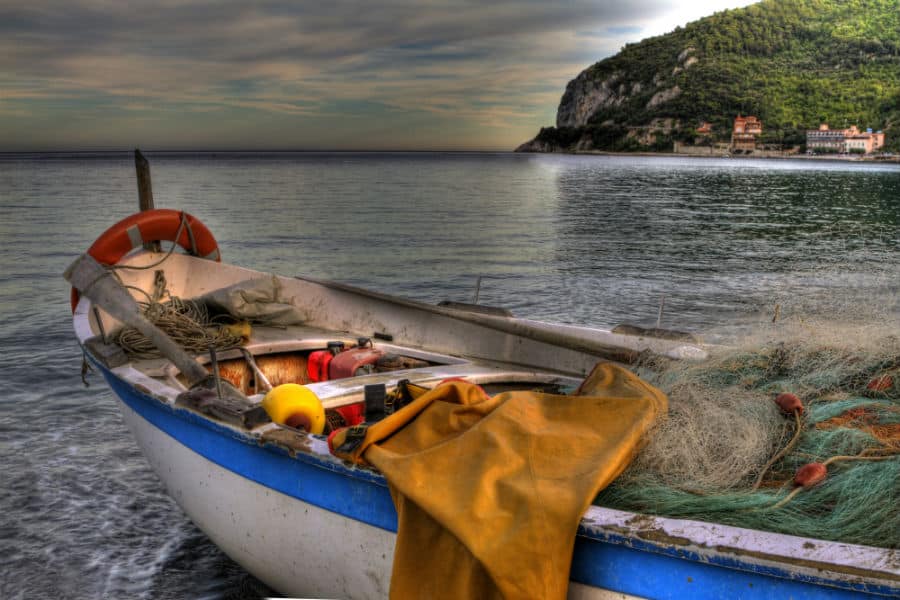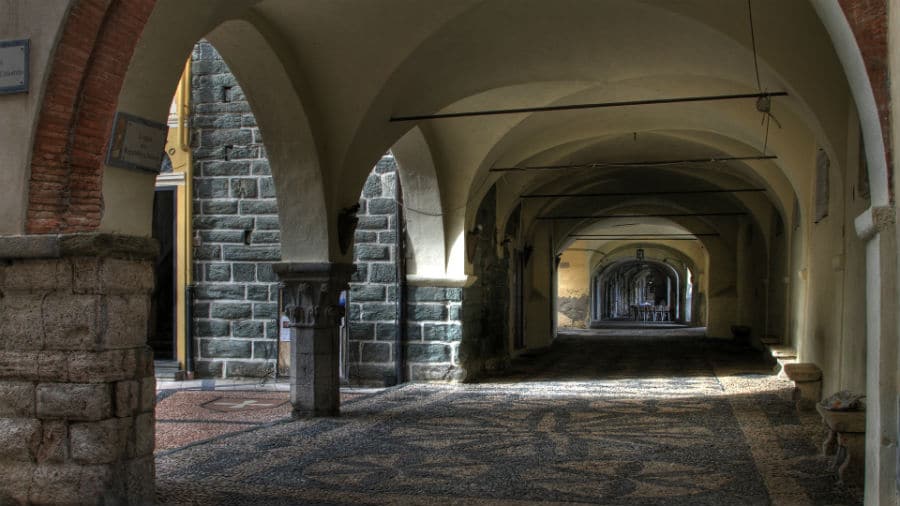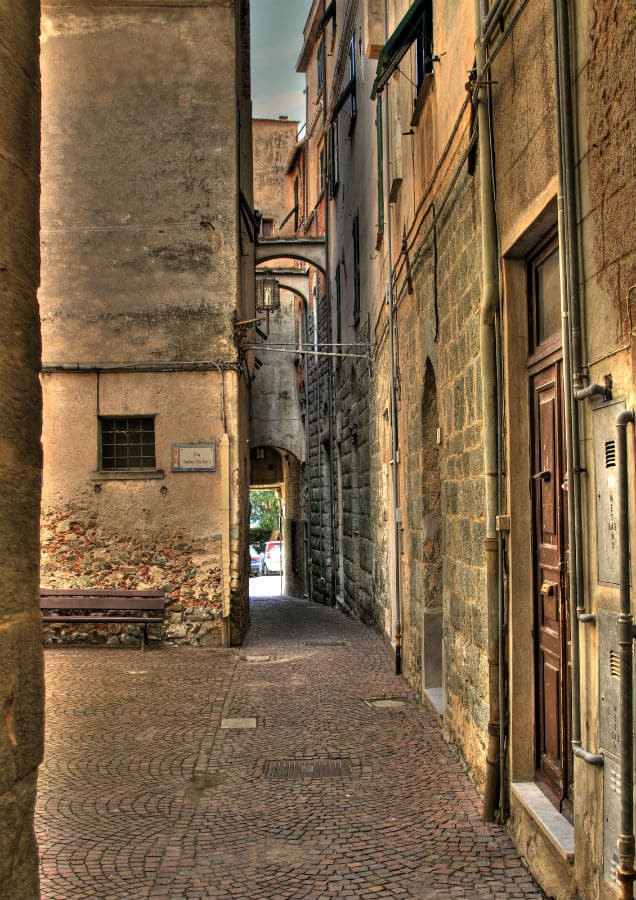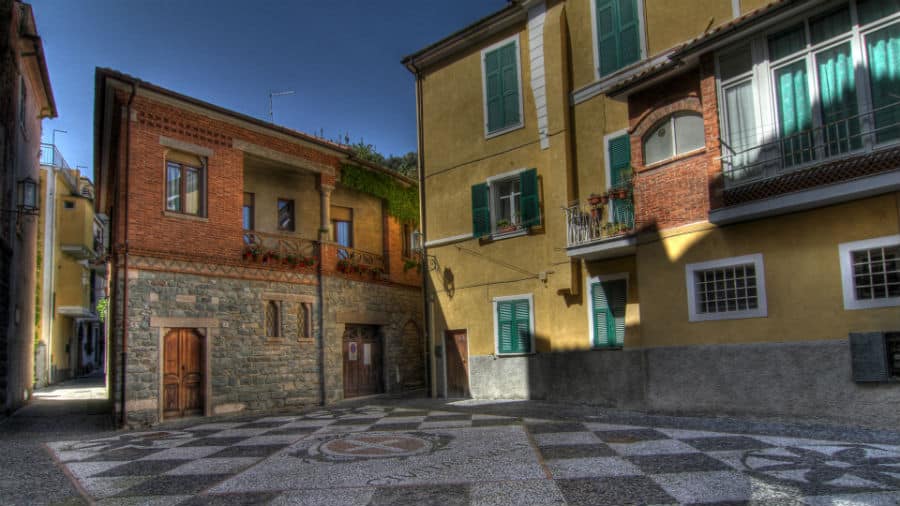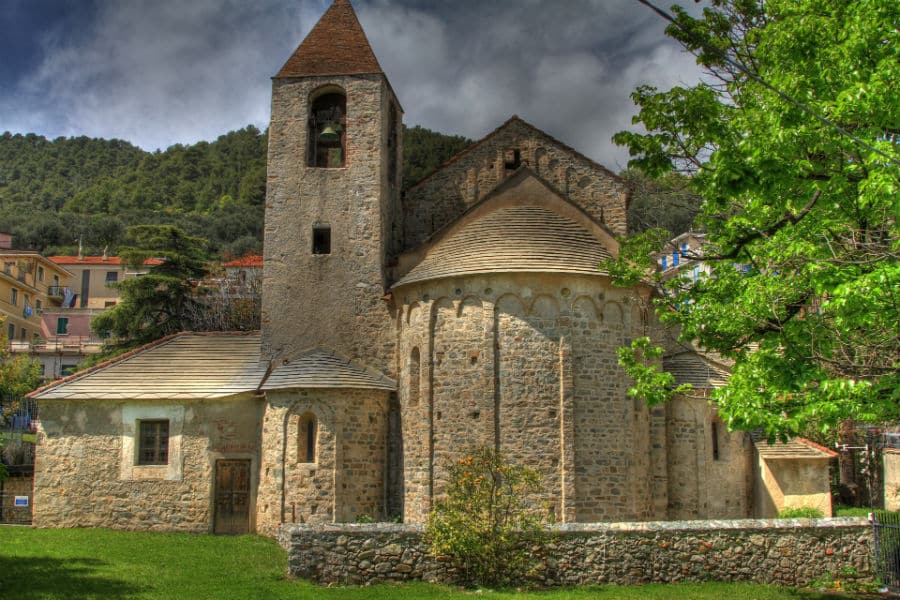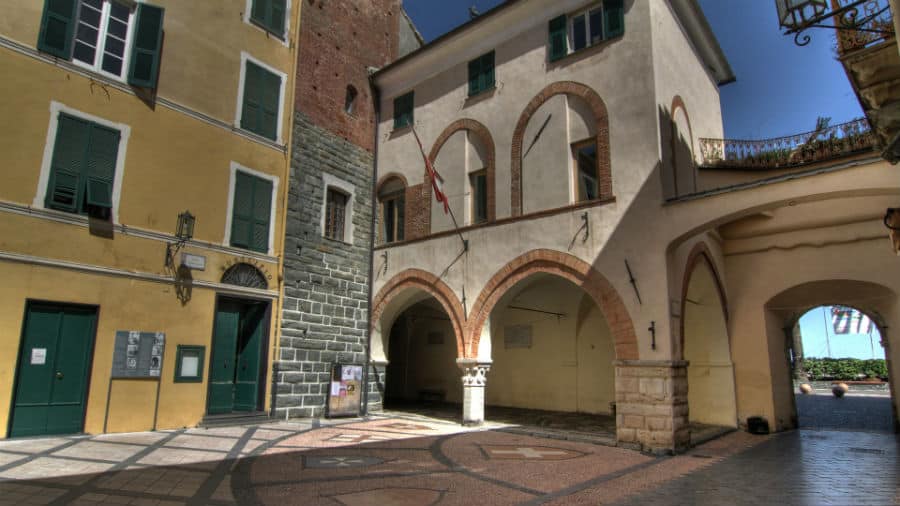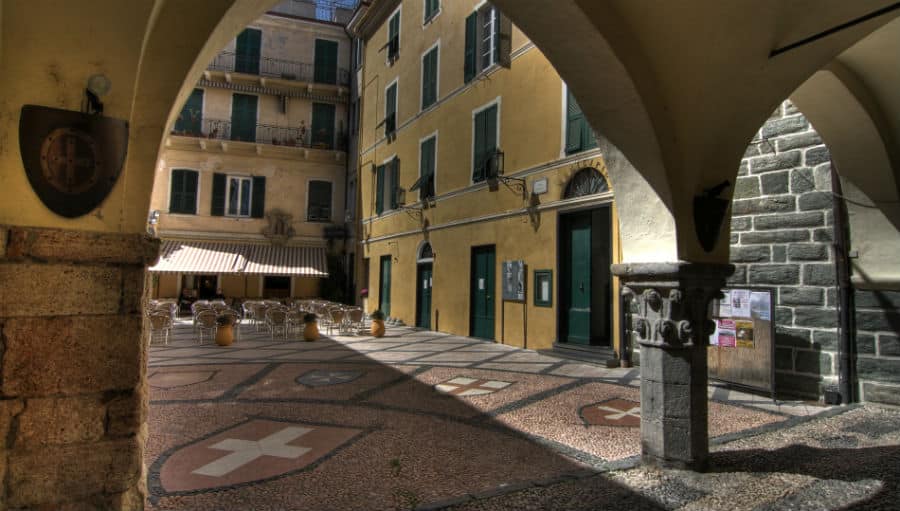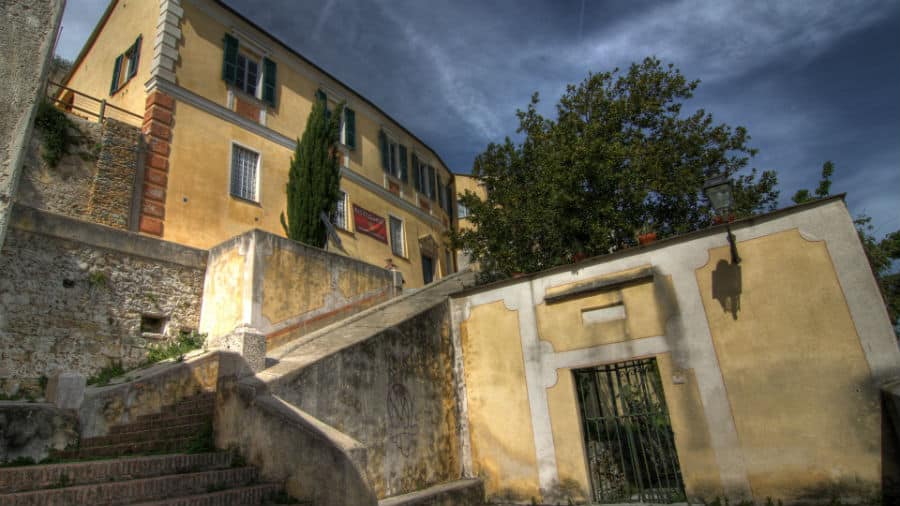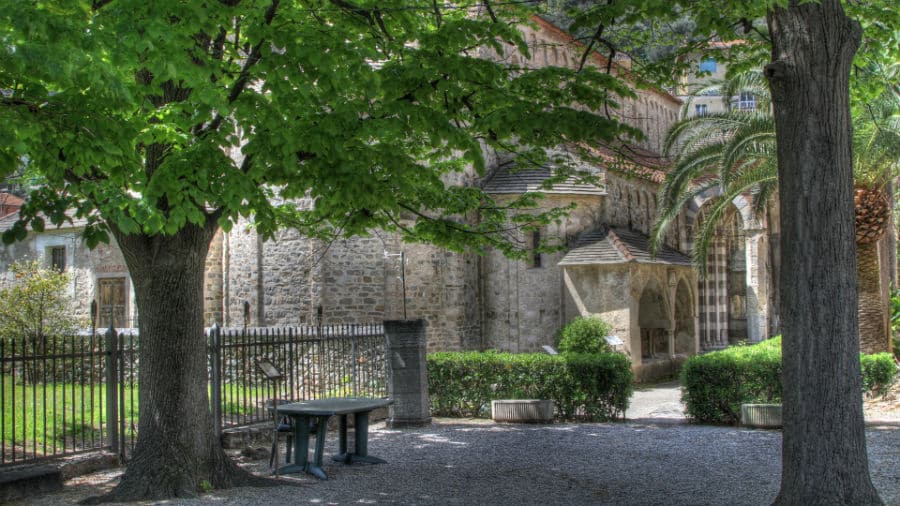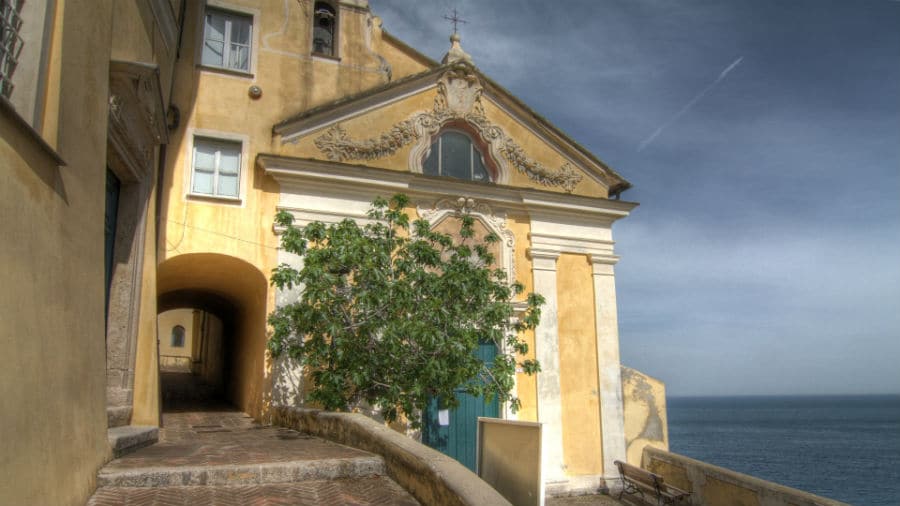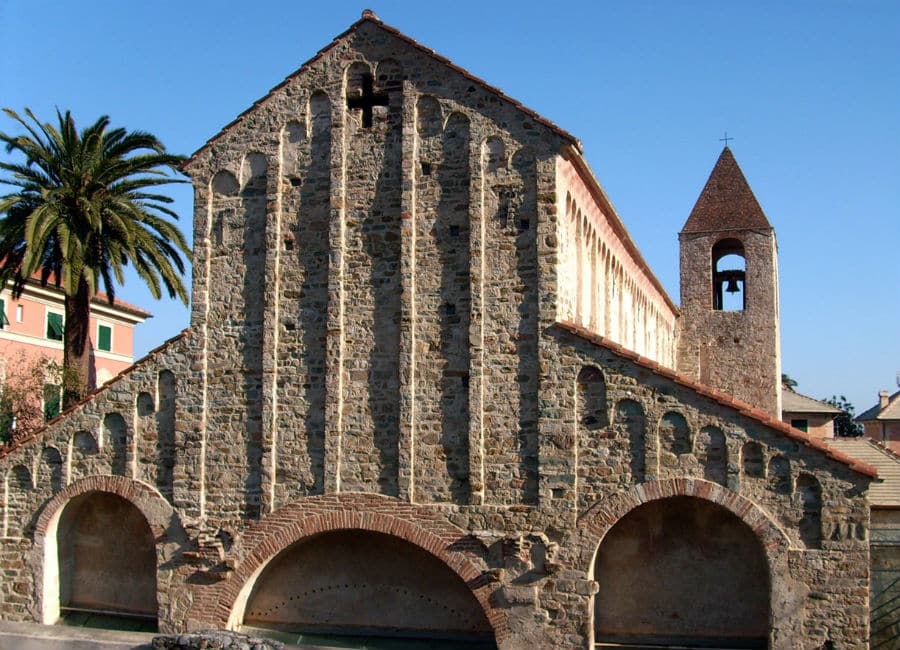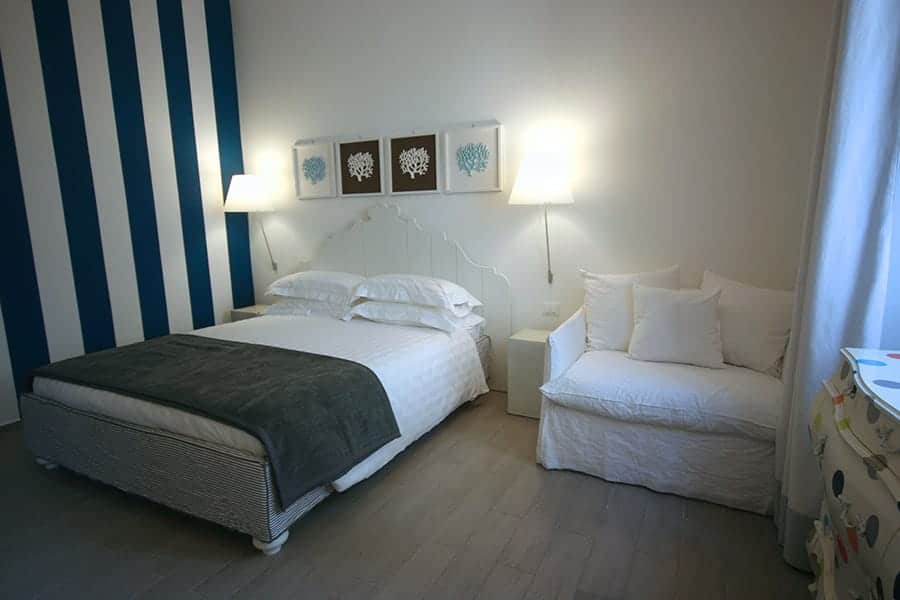from 1192 to 1797, the village of Noli was the capital of the homonymous republic that, albeit tied to the fate of the Republic of Genoa and other centers of local power, enjoyed to sections of a certain formal independence. It is situated on the coast of the Riviera di Ponente, in a cove closed east from Bergeggi Island and south-west from the homonymous cape on the mouth of the river Luminella. Note seaside resort of the Riviera di Ponente, Noli is distinguished by the evocative Antico Borgo Marinaro, characterized by narrow alleyways (carüggi), many of which are surmounted by small arches carriers. The town has remained one of the few coastal villages to still have fishermen of the place that every night, come out at sea with their small motor boats and return in the morning with the little fish that offers the gulf. The agricultural activity is mainly based on the production of wine and olive oil. Among the most precious wines the Lumassina, produced in the valleys between freight rates and Finale Ligure. It should also be noted the production of Cicciarelli, dish fish which has obtained the recognition of "a Slow Food".
The ancient center of the Liguri, was town hall in Roman times. His name, mentioned in some documents of 1004 and 1005 with the name of Naboli, probably derives from Neapolis, derivation greek and latin for "new town". In the middle ages it was the basis of Byzantine and became a domain of the Lombards, who destroyed in 641, was completely rebuilt near the sea. It was also domain of the Franks of Carlo Magno. Dismemberment of the Carolingian empire was inserted, together with the nearby Varigotti, of the possessions of the Aleramica and of the Del Carretto family of branch of Savona. Became an important marine center, with a conspicuous and prepared the naval fleet on a par with other large centers of marinari of Liguria, participated in 1099 to the first crusade receiving political privileges, but above all commercial, by the king of Jerusalem Baldwin I, from the Lord the feudatory Boemondo d'Antiochia and Tancredi di Sicilia. The expansion of the Republic of Noli - that at its maximum splendour reached the domination in the close villages of Orco, Mallare, sign and Vado - lasted until the end of the XIV century when the small harbor, who offered refuge and stability during the medieval era, was instead now inadequate for the important commercial dealings of the epoch, leading almost Noli to a maritime isolation; villagers themselves by skillful and daring sailors were transformed soon in simple fishermen. Throughout the Sixteenth and Seventeenth Century Noli and its small repubblica marinara knew therefore difficulties internal policies, aggravated by the increasingly exhausting struggle with the marquisate finale and Savona, invasions of pirates, nearby Piedmontese dominations, Lombardy and Spanish by famines and epidemics. In 1673 a conspiracy of some inhabitants of Noli risked dropping the republic in the hands of the Duchy of Savoy ; the intervention of senator Antonio Viale, sent by the genoese senate on request of the consuls nolesi placò, the short revolt. As well as the Republic of Genoa and the rest of Liguria was occupied by the Napoleonic troops in 1797, despite the heavy naval bombardment from part of the English fleet in 1795 against the French. With the French domination the territory of Noli returned from 2 December 1797 in the Department of Letimbro, with capital Savona, incorporating the former republic nolese inside of the Ligurian Republic. In 1815 Noli was incorporated in the Kingdom of Sardinia, as well as established the Congress of Vienna in 1814, and subsequently in the Kingdom of Italy from 1861.
The historic center is - today on the Aurelia, a time directly on the beach by the sea - with a front porch. This was originally the center of the maritime village, in the same way in which the portico of Sottoripa it was for Genoa. Connected to the portico is the medieval Palazzo del Comune with the civic tower.


